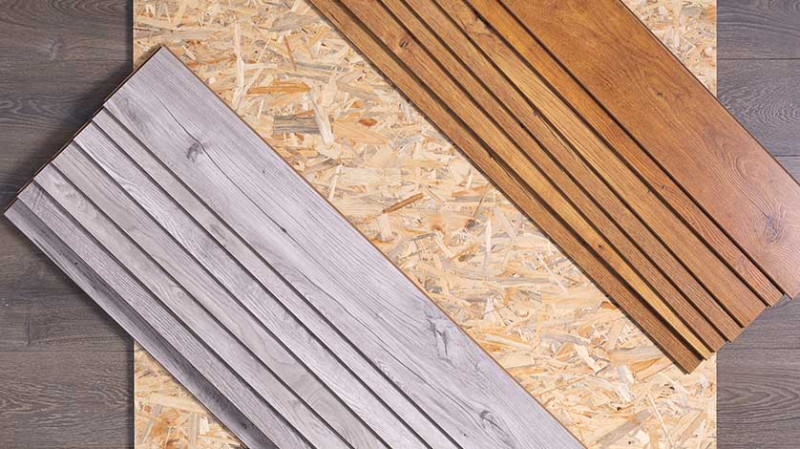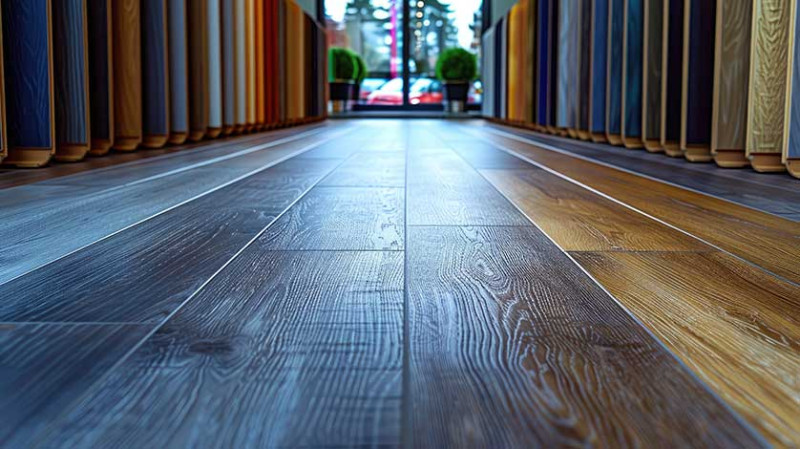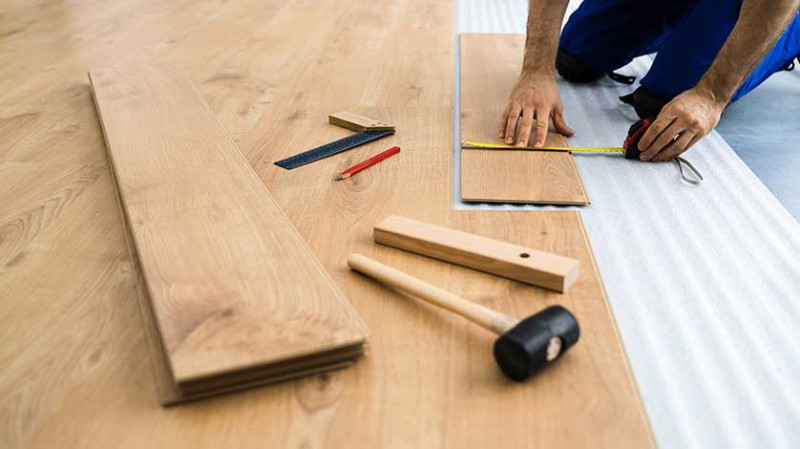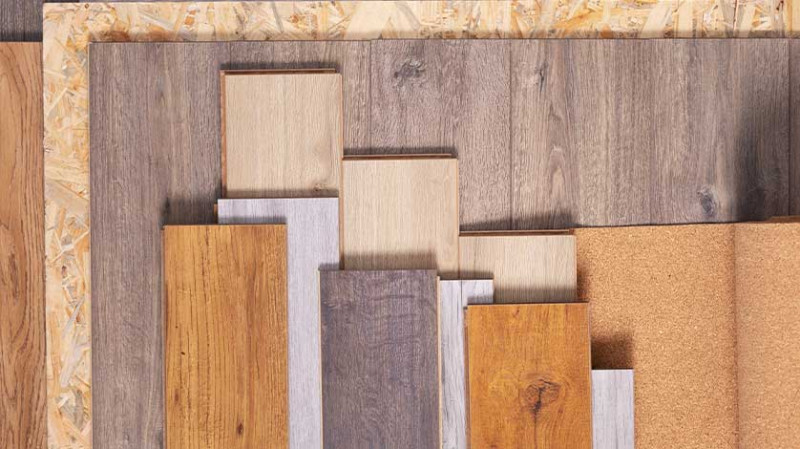
When it comes to flooring options, homeowners are often faced with a critical decision: should they invest in real hardwood or opt for laminate? Both choices have their merits, but understanding the nuances between them can help you make an informed decision that aligns with your lifestyle, budget, and aesthetic preferences. In this comprehensive guide, we will delve into the performance, durability, maintenance, and overall value of real hardwood and laminate flooring, helping you unleash the hidden potential of your home.
Introduction
Choosing the right flooring for your home is a significant decision that can impact not only the aesthetic appeal of your space but also its functionality and value. Real hardwood and laminate flooring are two popular options that cater to different needs and preferences. In this blog post, we will explore the hidden performance of both materials, helping you understand which option is best suited for your modern home.
Understanding Hardwood Flooring
Types of Hardwood
Hardwood flooring is made from solid wood and is available in various species, each offering unique characteristics. The most common types of hardwood include:
- Oak: Known for its durability and classic look, oak is a popular choice for traditional and modern homes alike.
- Maple: With a light color and fine grain, maple is ideal for contemporary designs.
- Cherry: This hardwood darkens over time, adding warmth and richness to any space.
- Walnut: Renowned for its deep, rich tones, walnut is perfect for creating a luxurious atmosphere.
Benefits of Hardwood Flooring
- Longevity: With proper care, hardwood floors can last for decades, making them a long-term investment.
- Aesthetic Appeal: The natural beauty of hardwood adds warmth and character to any room.
- Increased Home Value: Hardwood flooring is often seen as a premium feature, potentially increasing your home's resale value.
- Sustainability: When sourced responsibly, hardwood is a renewable resource that can be harvested sustainably.
Exploring Laminate Flooring
Types of Laminate
Laminate flooring is a synthetic product made from multiple layers of materials, including a photographic layer that mimics the appearance of wood. The main types of laminate include:
- High-Pressure Laminate (HPL): Known for its durability and resistance to wear, HPL is ideal for high-traffic areas.
- Direct Pressure Laminate (DPL): This type is more affordable and suitable for residential use, though it may not be as durable as HPL.
Benefits of Laminate Flooring
- Affordability: Laminate is generally more budget-friendly than hardwood, making it an attractive option for homeowners on a tight budget.
- Easy Installation: Many laminate products feature a click-lock design, allowing for quick and straightforward installation.
- Variety of Styles: Laminate flooring comes in a wide range of colors and patterns, enabling homeowners to achieve their desired look without breaking the bank.
- Stain and Scratch Resistance: Laminate is designed to withstand everyday wear and tear, making it a practical choice for families and pets.
Performance Comparison: Hardwood vs. Laminate
Durability
When it comes to durability, hardwood and laminate flooring have distinct advantages and disadvantages:
- Hardwood: While hardwood is durable, it can be susceptible to scratches, dents, and water damage. However, it can be sanded and refinished multiple times, extending its lifespan significantly.
- Laminate: Laminate is highly resistant to scratches and stains, making it an excellent choice for high-traffic areas. However, once damaged, laminate cannot be refinished, and individual planks may need to be replaced.
Maintenance
Maintenance is a crucial factor to consider when choosing between hardwood and laminate:
- Hardwood: Regular sweeping and occasional mopping with a damp cloth are typically sufficient for hardwood maintenance. However, it may require refinishing every few years, depending on wear and tear.
- Laminate: Laminate is low-maintenance and can be cleaned with a damp mop or cloth. It does not require refinishing, making it a hassle-free option for busy households.
Aesthetic Appeal
The aesthetic appeal of flooring can significantly influence your home's overall design:
- Hardwood: The natural grain patterns and rich colors of hardwood create a timeless and elegant look that can enhance any interior style.
- Laminate: While laminate can mimic the appearance of wood, it may lack the depth and character of real hardwood. However, advancements in technology have led to more realistic designs that can closely resemble hardwood.
Environmental Impact
When considering flooring options, it's essential to evaluate their environmental impact:
- Hardwood: Sustainable hardwood options are available, and many manufacturers adhere to responsible harvesting practices. Look for certifications like the Forest Stewardship Council (FSC) to ensure your hardwood is sourced sustainably.
- Laminate: Laminate flooring is often made from recycled materials, making it a more eco-friendly choice. However, the production process can involve chemicals that may not be environmentally friendly.
Installation Process
The installation process can vary significantly between hardwood and laminate:
- Hardwood: Installing hardwood flooring typically requires professional installation, especially for solid hardwood. The process can be time-consuming and may involve acclimating the wood to the environment.
- Laminate: Laminate flooring is designed for easy installation, often featuring a click-lock system that allows homeowners to install it themselves. This can save on labor costs and time.
Conclusion
In the battle of hardwood vs. laminate, both flooring options have their unique advantages and disadvantages. Real hardwood offers timeless beauty, durability, and long-term value, making it an excellent investment for homeowners looking to enhance their space. On the other hand, laminate provides affordability, ease of installation, and low maintenance, making it a practical choice for families and budget-conscious homeowners.
Ultimately, the decision between hardwood and laminate will depend on your individual needs, preferences, and lifestyle. By understanding the hidden performance of each option, you can make an informed choice that will elevate your modern home.
FAQs
Q1: Can laminate flooring be installed over existing flooring?
A1: Yes, laminate flooring can often be installed over existing flooring, provided the surface is level and in good condition.
Q2: How do I clean hardwood floors?
A2: Regular sweeping and occasional mopping with a damp cloth are recommended. Avoid using excessive water or harsh chemicals.
Q3: Is laminate flooring waterproof?
A3: While laminate is water-resistant, it is not entirely waterproof. Prolonged exposure to water can cause damage.
Q4: Can I refinish laminate flooring?
A4: No, laminate flooring cannot be refinished. If it becomes damaged, individual planks may need to be replaced.
Q5: How long does hardwood flooring last?
A5: With proper care, hardwood flooring can last for decades, often up to 100 years or more.
By weighing the pros and cons of real hardwood and laminate flooring, you can make a choice that not only meets your aesthetic desires but also aligns with your practical needs. Whether you choose the timeless elegance of hardwood or the modern convenience of laminate, your flooring will play a crucial role in defining your home's character and comfort.





